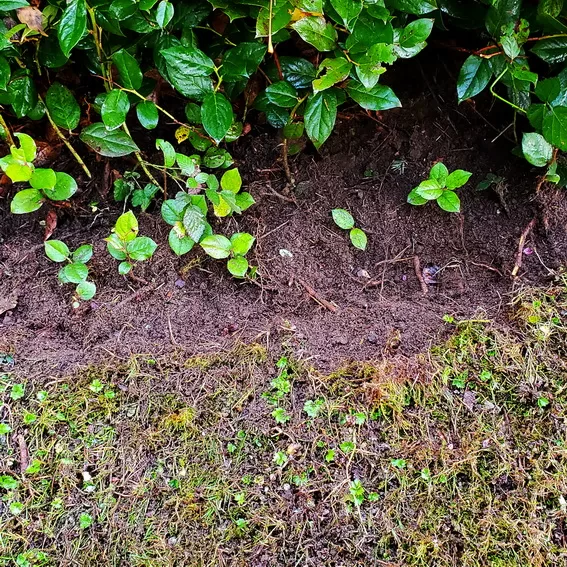The Bradley Sisters and the English Perennial Garden
Being Australians from Sydney, and very “British,” the two Bradley sisters were certainly familiar with English-style perennial gardens and likely had experience maintaining them. Recently, I realized that their well-known method of bushland restoration, the Bradley Method, could have evolved directly from their experience with preventing grass from invading flower beds.
Controlling Grass in Edges
If you’ve ever tried to keep perennial garden beds free of weeds, you inevitably learned that grass is the most difficult to control. Though first-year sprouts can easily be pulled by hand, it’s much harder to prevent adjacent turf from spreading into planting areas via rhizomes. If allowed to take hold for a few years the grass roots become so pervasive that the only recourse is to dig up the entire bed, rescue the good plants, and start over.
Bradley Lines
Over the years I’ve tried various physical barriers like bricks or timbers to prevent grass from spreading into planting areas, but the grass always finds a way under or through them. The best method I’ve found is simply to maintain a moat-like channel of at least a couple inches deep around each bed separating the turf from the bed. In other words, clear a narrow Bradley Line1 separating the “good area” from the “bad area.” In my forest restoration work, I use the same method to keep grass out of forest edges.


Maintaining the Bradley Lines and Expanding the Good Areas
Maintaining Bradley Lines around forest edges and perennial flower beds requires a minimum of annual redigging and removal of any invading grass. This task provides a good opportunity to expand the good areas, provided that the desired plants are creeping outward and filling in the gap behind the line. Recall that one of the key concepts behind the Bradley Method is to allow native vegetation to regenerate naturally in the cleared spaces between the good areas and the bad areas. Trying to expand the good areas at a pace greater than that driven by natural regeneration (overclearing) is ineffective and inefficient.
Gardening with Natives
Thus, the Bradley Method is simply a variation of one of the main methods used to maintain perennial flower beds, and once again we are reminded that backyard forest restoration is in essence a type of gardening with natives.
Footnote
1 I originally called them “weed breaks,” the cleared edges between weedy patches and areas of native vegetation. Then I learned of the Bradley Method that uses these breaks as the primary mechanism for bushland restoration and began using the term “Bradley Line” to draw attention to the method and to honor the two sisters that developed it.